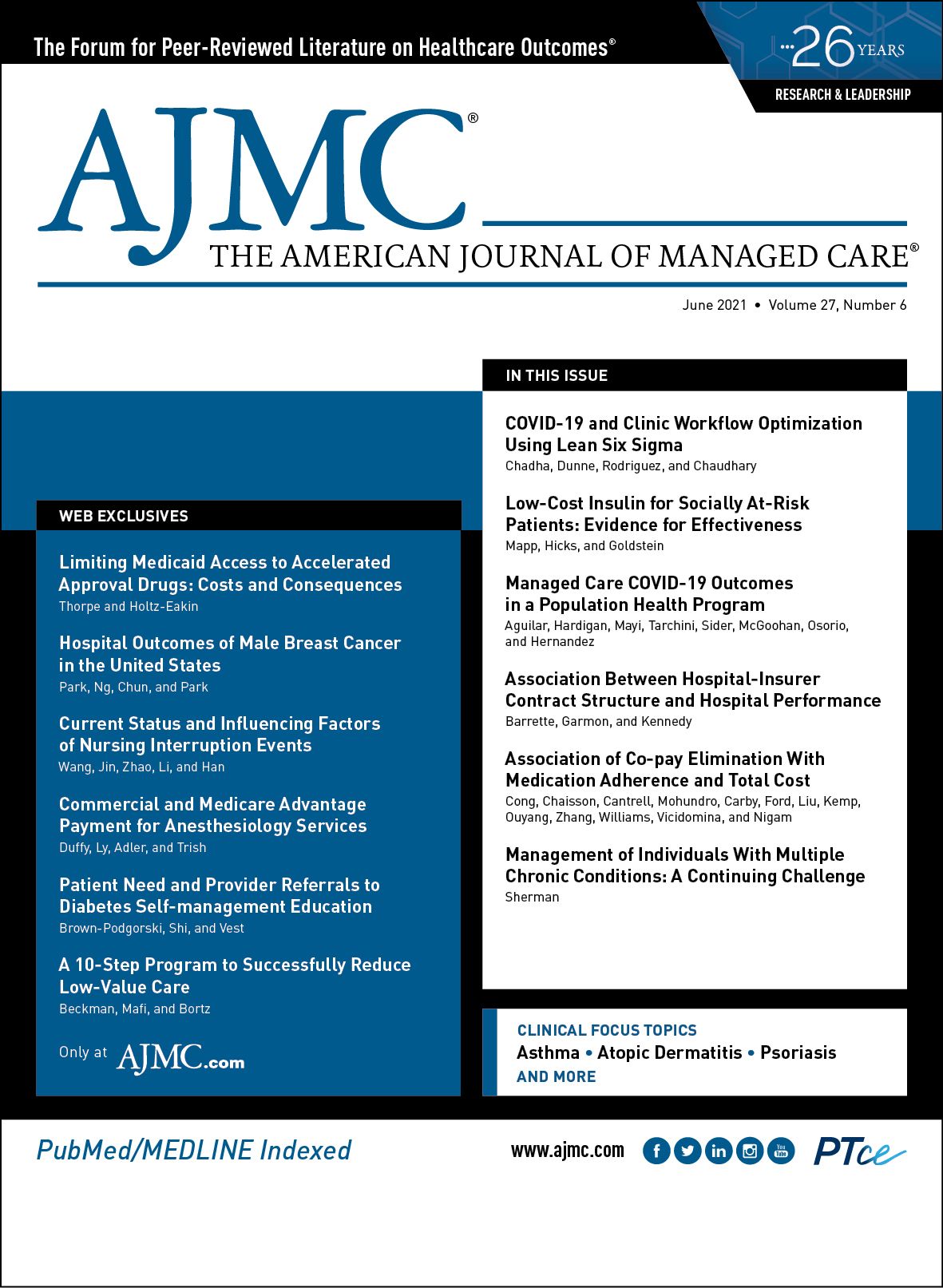Publication
Article
The American Journal of Managed Care
From the Editorial Board: Bruce W. Sherman, MD
Author(s):
One of the many insights generated from our collective experience with the COVID-19 pandemic is the need to ensure equitable access to health care for all individuals. Although many may reasonably assume that health inequities are particularly significant among individuals with substantial social needs, and especially those who are unemployed, the truth is that health inequities exist even among those with employer-sponsored health benefits.
Experiences with commercially insured populations indicate that the factors that perpetuate health inequities are broadly institutionalized. Perhaps the most significant of these is the ongoing assumption that findings from analyses of population-level claims data are generalizable to the entire population. Credible evidence is rapidly accumulating to counter this supposition, along with calls for the inclusion of race, ethnicity, and wage data in claims analyses to promote a better understanding of subpopulation-level variability in health care utilization and outcomes.
Benefit design plays a critical role, with only 7% of employers offering wage-based subsidies for low-wage workers, according to the most recent Kaiser Family Foundation Employer Health Benefits Survey.1 Often selected by enrollees because of their low premiums, high-deductible health plans have created financial barriers to accessing health care, particularly among low-wage workers. Numerous studies in this journal and others have demonstrated delayed or forgone care—including preventive care and evidence-based care for chronic conditions—in the setting of high-deductible health plans due to affordability concerns.
And there’s an unfortunate paradox. Low-income workers have the greatest prevalence of chronic conditions, notably obesity, hypertension, diabetes, and hyperlipidemia—yet they’re the least able to afford effective treatment. The current issue of The American Journal of Managed Care® includes an article that highlights the challenge of managing individuals with multiple chronic conditions and provides suggestions for approaches to improve clinical outcomes. Although many factors contribute to the development of multiple chronic conditions—including unhealthy diets, lack of exercise, cultural beliefs and behaviors, and prioritization of personal health concerns—low socioeconomic status appears to be a common denominator for many of these. Confounding the issue, many low-wage workers may not even have access to health benefits via their employers.
Equitable benefit design can play a critical role in facilitating access to appropriate care. It is time to move past a one-size-fits-all cost-based approach to health benefits offerings for employees and increase support for lower-income workers. Benefit design has been largely empirically derived by actuarial analyses at a population level. Little, if any, evidence exists regarding equitable benefit design considerations. Researchers interested in this topic have the opportunity to analyze natural experiments in which employers have implemented different benefit design approaches to improve benefits equity, such as wage-based premium subsidies, wage-based deductible levels, and wage-based health savings contributions. Researchers also have virtually limitless opportunities to enhance our understanding of disparities and inequities in managed care by assessing differences in responses, such as engagement in chronic condition management programs or response to value-based insurance designs, by specific subpopulations.
Health plans, employers, and plan sponsors now have a moral obligation to promote greater equity in health benefit design. With growing awareness of health inequities among subpopulations, it can no longer be acceptable to maintain the status quo.
Reference
1. 2020 Employer Health Benefits Survey. Kaiser Family Foundation. October 8, 2020. Accessed May 14, 2021. https://www.kff.org/health-costs/report/2020-employer-health-benefits-survey/

Newsletter
Stay ahead of policy, cost, and value—subscribe to AJMC for expert insights at the intersection of clinical care and health economics.


